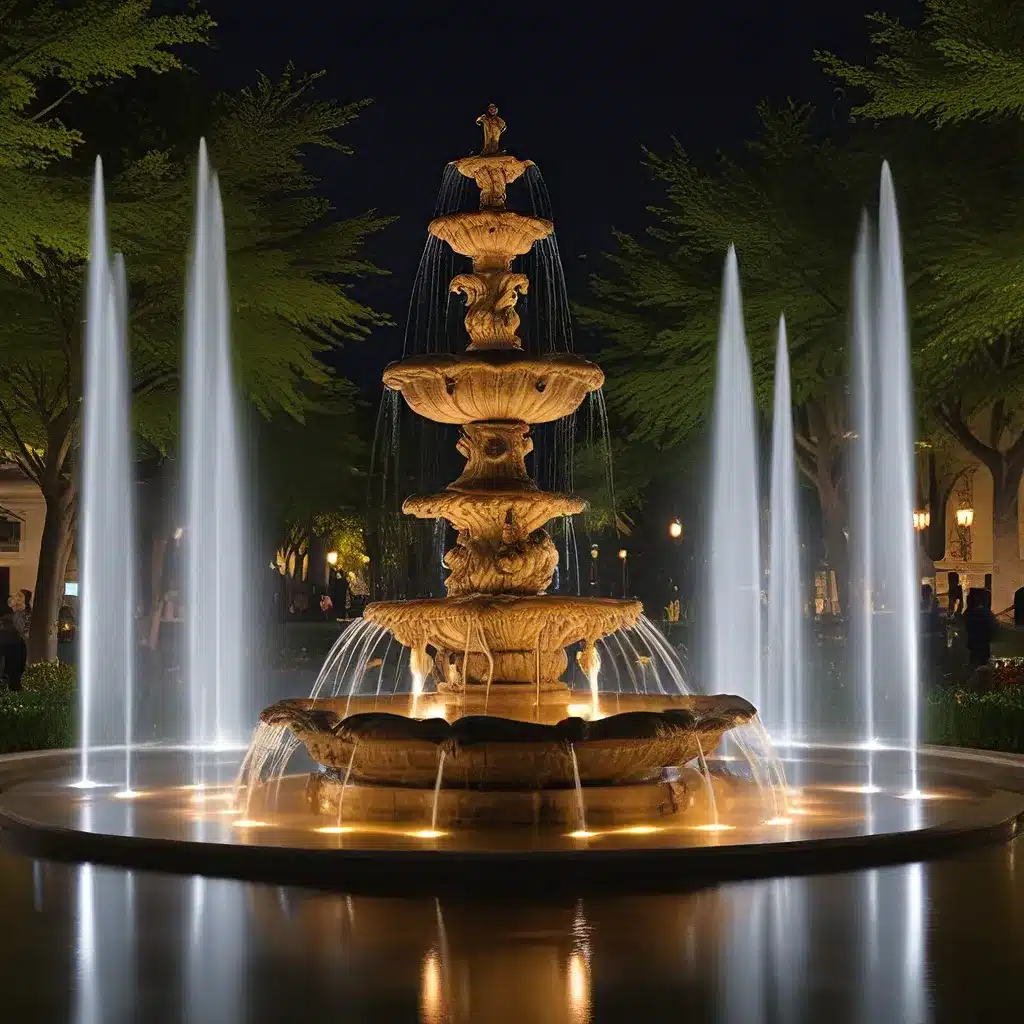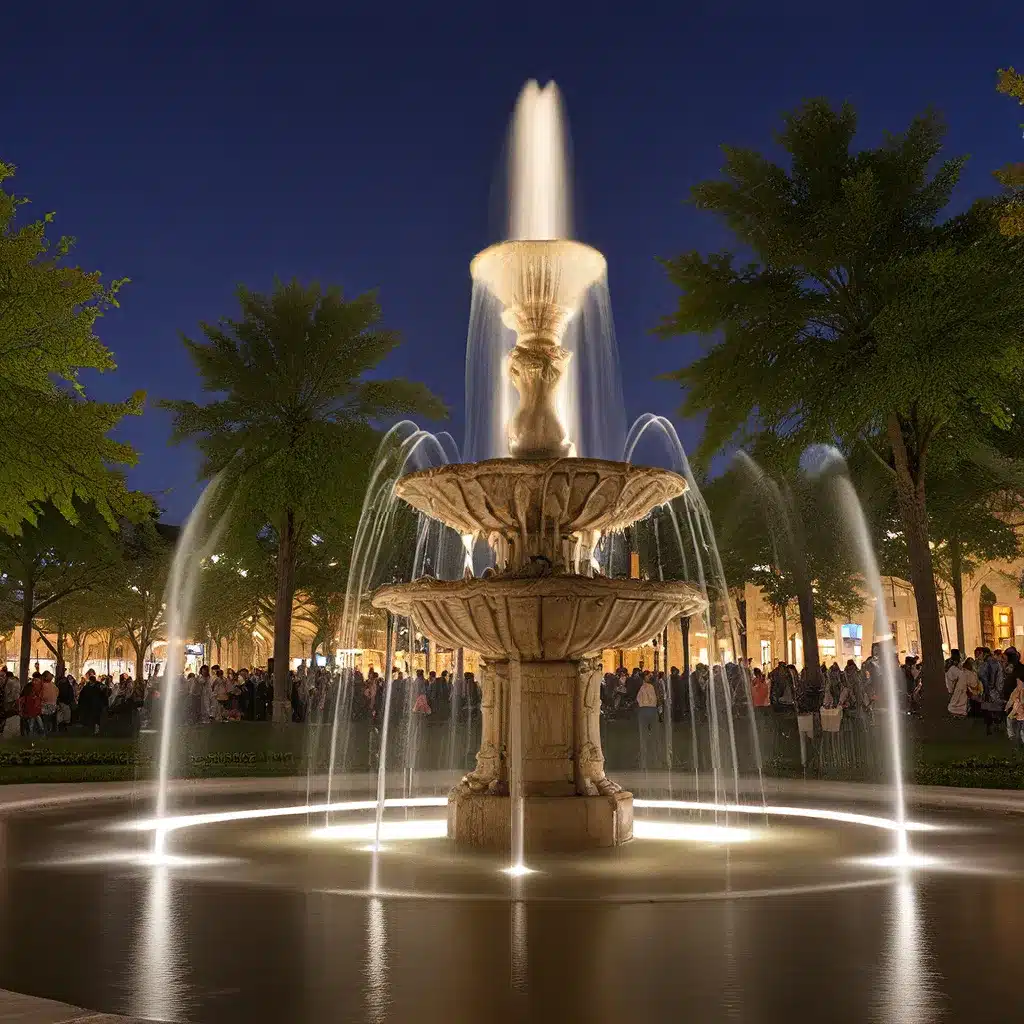
Fountain Design Essentials – Welcome to Fountain Lights
Fountain Design Essentials – Welcome to Fountain Lights

As a lifelong lover of all things aquatic, I’ve always been fascinated by the mesmerizing interplay of water and light. From the shimmering cascades of ancient Roman fountains to the choreographed water displays of modern-day theme parks, there’s just something captivating about the way H2O and illumination come together to create pure magic.
But what really gets my gears turning are the incredible technological advancements that have powered this evolution of fountain design over the centuries. You see, I’m not just a casual observer – I’m a self-proclaimed fountain lighting geek, constantly in awe of how the field has progressed.
And when it comes to the Second Industrial Revolution, I can’t help but feel a sense of reverence. This pivotal era, which spanned from around 1870 to the early 1900s, ushered in a wave of groundbreaking innovations that completely transformed the way we approach fountain lighting. From the development of steam-powered hydraulic systems to the widespread adoption of electric power, the ripples of these breakthroughs are still being felt today.
One of the most significant advancements to emerge from the Second Industrial Revolution was the steam engine. This ingenious invention, perfected by the likes of James Watt and George Stephenson, opened up a whole new world of possibilities when it came to fountain design and hydraulic engineering.
Prior to this, most water features relied on the natural flow of gravity or the laborious manual operation of pumps. But with the introduction of efficient steam power, fountain designers could now harness the force of pressurized water to create towering jets, cascading waterfalls, and other awe-inspiring displays. The rapid expansion of railway networks and the availability of cheap steel also played a crucial role in this transformation, allowing for the construction of larger, more ambitious fountain systems.
One pioneering example that comes to mind is the iconic Jet d’Eau in Geneva, Switzerland. Installed in 1886, this majestic fountain uses a powerful steam-driven pump to propel water up to a height of 140 meters (459 feet)! Can you imagine the sheer engineering prowess required to achieve something like that in the late 19th century? It’s a true testament to the ingenuity of the era.
Of course, the advent of electric power was another game-changer during the Second Industrial Revolution – and its impact on fountain design was no less profound. As electric lighting became more widespread and affordable, designers could finally bring their aquatic visions to life in dazzling, technicolor glory.
Gone were the days of relying on gaslight or oil lamps to illuminate fountains. Suddenly, fountains could be bathed in a kaleidoscope of mesmerizing colored lights, creating truly otherworldly experiences. Just imagine the awe-struck faces of 19th-century onlookers as they witnessed the first electrically-lit fountains spring to life in a symphony of light and water!
One particularly iconic example that springs to mind is the Buckingham Fountain in Chicago, Illinois. Unveiled in 1927, this colossal fountain features a stunning light show that transforms the cascading water into a captivating visual spectacle. And it all traces its roots back to the revolutionary electrical innovations of the Second Industrial Revolution.
As I reflect on the incredible advancements of this pivotal era, I can’t help but feel a sense of wonder and inspiration. The sheer ingenuity and problem-solving prowess of the pioneers who drove the Second Industrial Revolution is truly humbling.
And you know what? I believe that same spirit of innovation is alive and well today. At Fountain Lights, our team is constantly pushing the boundaries of what’s possible, drawing inspiration from the past to create cutting-edge lighting solutions that bring fountains to life in dazzling new ways.
Whether it’s developing advanced hydraulic systems that can propel water to unprecedented heights or experimenting with the latest in LED lighting technology, we’re driven by an insatiable curiosity and a relentless pursuit of perfection. After all, in a world where the only constant is change, the true mark of greatness lies in the ability to adapt, innovate, and continuously redefine the limits of what’s possible.
So what does the future hold for fountain lighting design? If the lessons of the Second Industrial Revolution have taught us anything, it’s that we should always be prepared for the unexpected. Who knows what incredible breakthroughs are just around the corner, waiting to transform the way we think about water, light, and the endless possibilities that lie at their intersection?
Perhaps we’ll see the emergence of AI-powered control systems that can choreograph fountains with unprecedented precision and artistry. Or maybe renewable energy sources will become the driving force behind the next generation of eco-friendly, sustainable fountain designs. The only thing I’m certain of is that the journey ahead will be nothing short of captivating.
One thing’s for sure: as a self-proclaimed fountain lighting enthusiast, I can’t wait to see what the future has in store. After all, when it comes to the marriage of water and illumination, the possibilities truly are endless. So let’s dive in, my friends, and see where the tides of innovation will carry us next!
Share to :